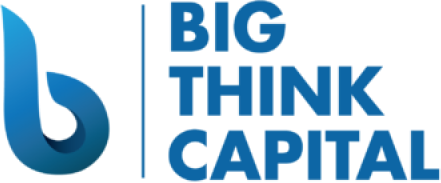Surviving the Hike: Strategies for Small Businesses to Overcome Federal Interest Rate Increases
Estimated Reading Time: 5 minutes
- Understand the impact of rising interest rates on small business finances.
- Explore diverse funding options and strategies to manage costs.
- Learn how to effectively manage credit scores and lender relationships.
Table of Contents
- Understanding the Impact of Federal Interest Rate Hikes
- Answering Your Top Searched Questions
- Financial Tools to Manage Rising Interest Rates
- Managing Credit Scores Effectively
- Building Healthier Relationships with Lenders
- Conclusion
Understanding the Impact of Federal Interest Rate Hikes
As a small business owner, you may be wondering how higher interest rates influence your financial decisions. Some of the key effects include:
Increased Cost of Borrowing
When the Federal Reserve raises interest rates, the cost of borrowing rises as well. This means that:
- Loans Become More Expensive: Business loans, including SBA loans and lines of credit, carry higher interest rates, increasing overall repayment costs.
- Tighter Lending Standards: Lenders may adopt more stringent criteria for loan approval, making it harder for small businesses to qualify for financing.
Effects on Cash Flow
Higher interest rates can affect your cash flow in multiple ways:
- Elevated Monthly Payments: Businesses with existing debt may see their monthly payments increase, putting additional pressure on operational budgets.
- Reduced Access to Capital: With rising interest rates, some small businesses may find themselves unable to secure necessary funds to invest in growth or manage day-to-day expenses.
Consumer Spending Impact
Interest rate hikes can affect consumer behavior:
- Decreased Consumer Spending: As borrowing costs rise for consumers, discretionary spending may decline, impacting sales for small businesses.
- Slower Growth: Businesses may need to reassess projections and growth strategies as economic conditions change.
Practical Takeaway 1: Assess Your Debt Portfolio
If you have existing loans, take the time to review your current interest rates and repayment terms. If feasible, consider refinancing options to take advantage of any lower rates while they are still available.
Answering Your Top Searched Questions
As small businesses confront these new challenges, several common questions arise.
How Do Higher Interest Rates Affect Small Businesses?
Higher interest rates impact small businesses by:
- Boosting financing costs: Loans and credit lines become more expensive, reducing affordability.
- Encouraging savings: Higher rates may incentivize consumers to save rather than spend, affecting sales.
- Challenging cash flow: Increased debt service payments may strain day-to-day operations.
How Can Businesses Offset the Cost of Rising Interest Rates?
If you’re looking for ways to manage the impact of higher interest rates on your business, consider the following strategies:
- Diversify Funding Sources: Explore options like equipment financing, merchant cash advances (MCAs), and business lines of credit to find the best fit for your needs.
- Negotiate Loan Terms: Don’t hesitate to negotiate better terms with lenders or seek financing options that offer more favorable conditions.
- Implement Cost-Cutting Measures: Review your expenses closely to identify areas where expenses can be minimized, helping preserve cash flow.
Practical Takeaway 2: Explore Diverse Financing Options
Engage with various financing products. Each option has distinct characteristics that can benefit specific business needs. For instance, working capital advances can offer quick access to cash while maintaining flexibility.
Financial Tools to Manage Rising Interest Rates
With rising costs of borrowing, small businesses can turn to specific financial tools and strategies to weather the storm. Here are several options:
SBA Loans
The U.S. Small Business Administration provides government-backed loans that often have lower interest rates compared to conventional loans and longer terms. These loans can help stabilize cash flow:
- Great for long-term financing needs
- Generally lower monthly payments due to extended repayment periods
Working Capital Advances
Working capital advances allow businesses to get immediate access to funds based on expected future sales. This financing option is less dependent on credit scores, making it easier to secure even with higher interest rates.
Merchant Cash Advances (MCAs)
MCAs provide quick funding in exchange for a percentage of future sales. While they can have higher costs, they are flexible, adapting to your cash flow.
Business Lines of Credit
A business line of credit offers flexibility and access to funds as needed, enabling businesses to manage unexpected expenses or take advantage of opportunities without immediate repayment pressures.
Equipment Financing
If your business relies heavily on equipment, finance your purchases through equipment financing solutions. This often allows you to buy or lease machinery while keeping upfront costs low and provides the benefit of potential tax deductions.
Practical Takeaway 3: Leverage Financial Technology
Consider integrating digital cash flow management tools in your operations. Utilize platforms that can help monitor, forecast, and manage cash flow more effectively, helping you respond to financial pressures strategically.
Managing Credit Scores Effectively
Your credit score plays a critical role in determining your eligibility for financing, especially in a climate with higher interest rates. Here are some actionable steps to improve and manage your credit rating:
- Pay Bills on Time: Consistently paying bills on time is essential for a good credit score.
- Keep Credit Utilization Low: Aim to maintain a utilization rate below 30% on loans and credit lines.
- Regularly Review Credit Reports: Obtain and review your credit report to identify any discrepancies or areas for improvement.
Building Healthier Relationships with Lenders
In times of financial uncertainty, maintaining transparent and strong relationships with lenders can be beneficial:
- Communicate Proactively: Keep your lenders informed about your financial status and operations. Regular communication can foster trust and a better mutual understanding.
- Seek Advice: Don’t hesitate to ask lenders for advice or insights into managing your financing effectively.
Conclusion
Rising interest rates pose significant challenges for small business owners, but with the right strategies and knowledge of available financial tools, these challenges can be navigated successfully. By understanding the impacts, leveraging diverse funding sources, and building strong financial practices, your business can not only survive but thrive amidst the financial landscape that evolves in 2025.
If your business is facing challenges related to rising interest rates or you want to explore your financing options, Big Think Capital is here to help. Our team of funding experts is ready to assist you in finding the best financing solutions tailored to your needs. Learn more at bigthinkcapital.com or speak with one of our knowledgeable representatives today.






